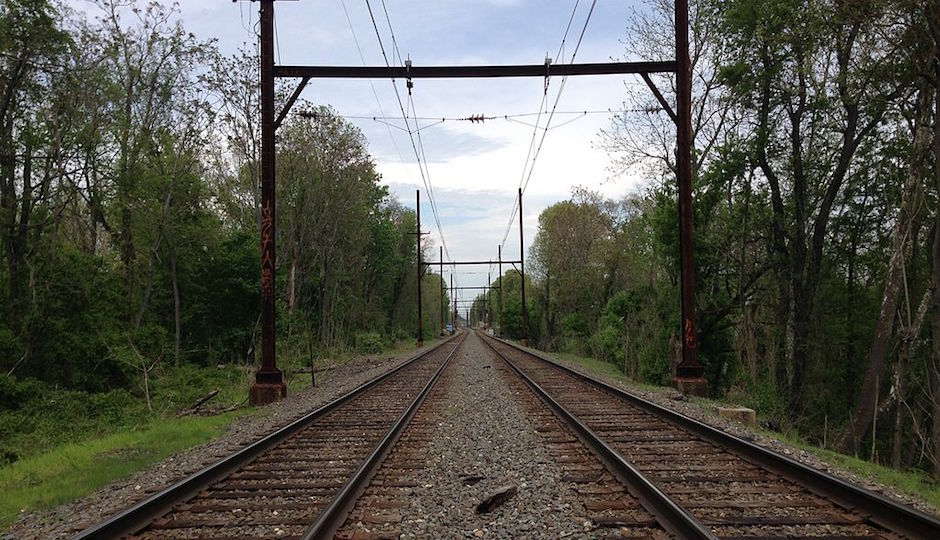Here’s Why SEPTA’s Regional Rail Trains Are Moving Reeeeally Slowly

Overhead wires and steel rails expand as they get hotter. So when the temperatures get too hot, SEPTA orders its Regional Rail trains to go slower. | Photo by Famartin via Wikimedia Commons, licensed under CC-BY-SA-3.0
Several SEPTA Regional Rail riders this morning noticed that an extra dose of aggravation had been added to their commutes: After having to show up early to get seats on increasingly packed trains, those trains then headed into Center City at a relative crawl.
One of those riders was SEPTA Media Relations Director Carla Showell-Lee.
So what caused the slowdown, Ms. Showell-Lee?
“Our operations staff confirmed that they had issued a heat advisory for the railroad today,” she responded.
Just as social service agencies advise elderly residents to get fans or head to “cooling centers” once the temperature is forecast to climb above 90 degrees, railroads also need to take steps to counter the heat.
Metals expand when they get hotter. This affects the operations of electrified railroads in two ways: One is that the expansion of the welded rails creates the possibility that they might deform and cause a derailment. This usually doesn’t pose a real threat to high-speed operations until temperatures pass 100 degrees, but railroads will slow trains down as a precaution. The other involves the overhead wire that powers the trains. When it expands due to the heat, it sags. The pantograph (that’s the arm that extends from the roof of a rail car) of a fast-moving train pushing up against that sagging wire could pull it down, causing a service disruption on an entire line.
Newer overhead wires, such as those installed on the Airport Line, are counterweighted to maintain constant tension when the wires get hotter, but most of SEPTA’s wires date to the 1930s or earlier, before such technology was developed. As a result, when the forecast calls for temperatures above 90 degrees, SEPTA issues warnings calling for trains to reduce their speed as they make their runs in order to reduce the likelihood that they will take wires down with them.
The only thing SEPTA, or you, can do about this? Pray for an end to the heat wave.
Follow @MarketStEl on Twitter.


